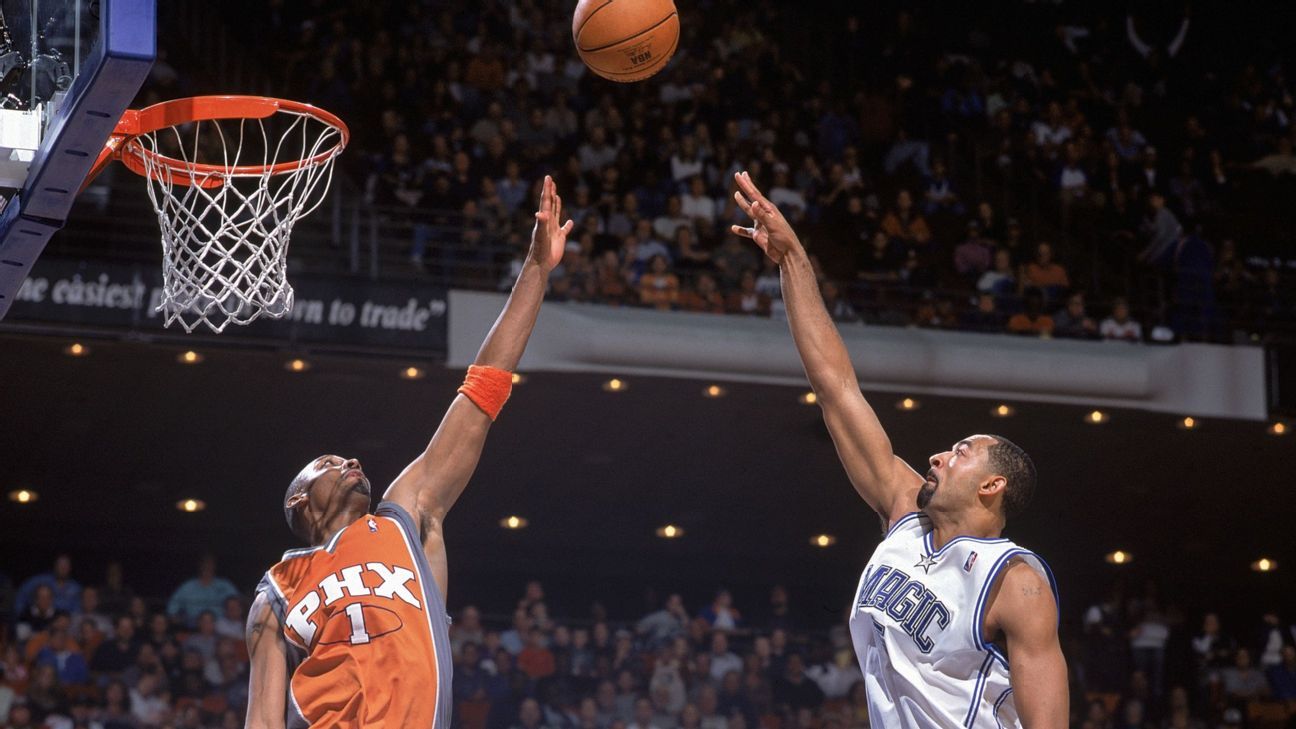When Baylor’s Scott Drew, Gonzaga’s Mark Few, Houston’s Kelvin Sampson and UCLA’s Mick Cronin gathered in Indianapolis for the 2021 Final Four, it was an unquestioned assemblage of four of the finest and most respected coaches in men’s college basketball.
What it wasn’t, however, was a reunion of former playing greats — three of last year’s Final Four coaches never played a second of college basketball. Few and Cronin suffered high school injuries that prevented them from pursuing college hoops. Drew played tennis in college. Sampson played basketball but was neither a star nor a household name during his playing days at UNC Pembroke.
If two Final Fours can really be called a trend, and we say they absolutely can, it would be appropriate to note that seven of the past eight Division I Final Four coaches did not play Division I college basketball. Chris Beard, late of 2019 national runner-up Texas Tech, did not play at Texas. Bruce Pearl, who nearly got Auburn to the 2019 title game, didn’t play high school basketball. Michigan State’s Tom Izzo, also in the ’19 Final Four, was a Division II standout at Northern Michigan. The outlier in that group of eight? Virginia’s Tony Bennett, who starred at Wisconsin-Green Bay and is one of only five men to play meaningful minutes in the NBA and also win a national championship in college basketball (Kevin Ollie, Billy Donovan, John Thompson, Al McGuire).
But Bennett is not in the 2022 NCAA tournament. The other seven guys mentioned above are.
The wide disparity between the coaches at the top and bottom of the list below is but another curiosity of an eternally curious game. The ability to sink a 3 or catch a lob is proven to have no relationship to winning as a coach at the highest level, but it is fun to examine nonetheless. As always, our rankings of the 68 NCAA tournament coaches as players list was devised in largely unscientific fashion by the writer, who still has not discovered a method to reliably compare a Division III star to a D-II reserve to a D-I walk-on. (Feel free to vent your frustrations like this guy did if you take issue with the rankings).
First, the breakdown of highest level of basketball achieved from this year’s group:
NBA (regular-season roster): 4
Other professional basketball experience: 10
Division I college basketball: 21
Lower NCAA levels, NAIA, or junior college: 23
High school (varsity roster): 7
No varsity high school experience: 3
68. Bruce Pearl, Auburn Tigers — Pearl did not play basketball at Sharon (Massachusetts) High School, as an injury suffered playing football during his freshman year prevented him from pursuing athletics. Pearl’s path to coaching came after he was hired as a student assistant at Boston College under Dr. Tom Davis, and was later added to Davis’ coaching staff at Stanford.
67. Leon Rice, Boise State Broncos — Rice played junior varsity basketball at Richland High School in southeast Washington but did not lace ’em up in his collegiate stops at Columbia Basin College or Washington State. Rice did play college football for Columbia Basin — the only former college football player on this year’s survey.
66. Scott Drew, Baylor Bears — Drew’s playing days ended with the JV team at Valparaiso (Indiana) High School. Though his brother, Bryce, played in the NBA, Scott Drew was a tennis player (he played on the team but didn’t letter) and basketball manager at Butler.
65. Niko Medved, Colorado State Rams — Medved played point guard for four years at Roseville Area High School in suburban Minneapolis, also lettering in golf. Medved did not play basketball at Minnesota, instead launching his career in coaching while working as a manager and later a student assistant for Clem Haskins with the Golden Gophers.
64. Chris Beard, Texas Longhorns — Beard was a regular for McCullough High School in The Woodlands, Texas, but did not play college basketball at Texas. Then-Longhorns coach Tom Penders gave Beard a managerial job, and he’d eventually become a student assistant at the school.

63. Brian Dutcher, San Diego State Aztecs — Dutcher played his final level of competitive basketball for the varsity team at Jefferson High School in Bloomington, Minnesota, later attending the University of Minnesota but not playing under his father, Jim Dutcher, the Golden Gophers’ head coach from 1975 to 1986. The younger Dutcher worked for his dad in a non-playing role during college before beginning his coaching career at Apple Valley (Minnesota) High School and later the University of Illinois.
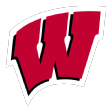
62. Greg Gard, Wisconsin Badgers — Gard was a three-sport athlete (including hoops) at Iowa-Grant High in rural Livingston, Wisconsin, but did not play basketball in college at Wisconsin-Platteville. He did play baseball at UW-Platteville in the 1990s but was cut before his sophomore year.

61. Mark Few, Gonzaga Bulldogs — Few led Creswell (Oregon) High to the state’s AAA semifinals as a senior point guard. Shoulder problems prevented him from playing at Linfield College, where he intended to play basketball and baseball.

60. John Becker, Vermont Catamounts — Becker was a good high school player at Roger Ludlowe High School in Fairfield, Connecticut. Read here about his 35-point game as a senior. Becker did not play intercollegiate basketball at Catholic University, his alma mater.
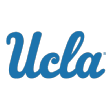
59. Mick Cronin, UCLA Bruins — Despite his diminutive stature (5-foot-7), Cronin was a good high school point guard under his father, Hep, at Cincinnati’s La Salle High. Cronin reportedly led the city in assists and was second in 3-point percentage during his junior season of 1988-89, but a knee injury sustained as a senior was a factor in Cronin’s playing career ending before he reached college at Cincinnati.

58. Kevin Nickelberry, LSU Tigers — LSU’s interim coach played two seasons as a walk-on at the Division III level for Virginia Wesleyan University of Virginia Beach.

57. Mark Adams, Texas Tech Red Raiders — Adams received a scholarship to play basketball at South Plains College, a community college in Levelland, Texas, before transferring to Texas Tech (where he did not play basketball) to finish his undergraduate studies. Adams began his move into coaching while in Lubbock, serving as a student assistant under then-head coach Gerald Myers.

56. Griff Aldrich, Longwood Lancers — Aldrich played at Division III Hampden-Sydney, appearing on a pair of NCAA tournament teams with the Tigers and serving as a team captain as a senior in 1995-96. Aldrich was college teammates and close friends with current Utah State coach Ryan Odom, under whom Aldrich later served at UMBC.
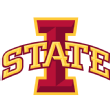
55. T.J. Otzelberger, Iowa State Cyclones — Otzelberger was a three-year letterwinner as a guard at the Division III level for Wisconsin-Whitewater, before his playing career with the Warhawks was cut short due to lateral compartment syndrome in his left leg. Otzelberger is one of several coaches on this list who are not the best player in their own families — his wife, Alison Lacey, was a star at Iowa State and a first-round WNBA draft pick of the Seattle Storm in 2010.

54. John Groce, Akron Zips — Groce played three seasons (1990-93) at the NAIA level for Taylor University of Upland, Indiana, also the alma mater of Ohio State coach Chris Holtmann. (Groce and Holtmann were backcourt teammates for one season). Groce played for NAIA Hall of Famer Paul Patterson, with his Trojans teams going a combined 90-16 during his three seasons and advancing to three NAIA National tournaments, including a Final Four appearance in 1991.

53. Steve Lutz, Texas A&M-Corpus Christi Islanders — Lutz began his college basketball career at Ranger Junior College before transferring to then-NAIA Texas Lutheran University of Segun, Texas. Lutz played three seasons for the Bulldogs (1992-95) and was a team captain during his senior season.

52. Mike Young, Virginia Tech Hokies — Young was a four-year letterman and point guard for Division III Emory & Henry from 1982 to 1986, serving as the Wasps’ team captain his junior and senior seasons.

51. Randy Bennett, Saint Mary’s Gaels — Bennett started his career playing under his father, Tom, at Mesa Community College in Arizona (1980-82), then played two seasons as a point guard at then-Division III UC San Diego (1983-85). Bennett led the Tritons in assists in both of his seasons with the team.

50. Lamont Paris, Chattanooga Mocs — Paris played college basketball at the Division III level for the College of Wooster in Ohio, earing a pair of varsity letters according to the school and appearing in three NCAA Division III tournament games as a member of the Scots. Paris, who was named team MVP and was a captain as a junior and senior, crossed over for one season in the North Coast Athletic Conference (NCAC) with Kenyon star Shaka Smart.

49. Rick Barnes, Tennessee Volunteers — Barnes served mainly as a reserve guard under head coach Bob Hodges at Division II Lenoir-Rhyne College in Hickory, North Carolina, from 1974 to 1977, never averaging more than three points per game. “He was good, but it didn’t translate to games,” Barnes’ teammate John Lentz told the Dallas Morning News in 1998.
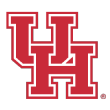
48. Kelvin Sampson, Houston Cougars — Sampson was a point guard and later a team captain at NAIA Pembroke State (now UNC Pembroke) from 1973 to 1978, and was eventually named to the school’s athletics Hall of Fame, alongside his father, Ned. Sampson also earned three collegiate letters as a baseball player at Pembroke.
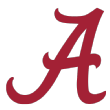
47. Nate Oats, Alabama Crimson Tide — Oats played at Division III Maranatha Baptist University in Watertown, Wisconsin, from 1993 to 1997, serving as a captain and earning all-conference honors.
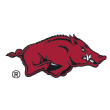
46. Eric Musselman, Arkansas Razorbacks — Musselman was an undersized reserve guard at the University of San Diego (1983-87), earning limited playing time but appearing in a pair of NCAA tournaments as a player. After graduating, Musselman was a fifth-round draft choice of the CBA Albany Patroons, who were at the time coached by his father, Bill.

45. James Jones, Yale Bulldogs — Jones played at then-Division III Albany from 1982 to 1986 and captained the freshman team during his first year on campus.

44. Ed Cooley, Providence Friars — Cooley was a three-year captain at Division II Stonehill College in Easton, Massachusetts, from 1990 to 1994, averaging 7.4 points and 5.6 rebounds per game for his career.

43. Tom Izzo, Michigan State Spartans — Izzo played point guard at Division II Northern Michigan from 1974 to 1977, captaining the team and also winning all-conference and team MVP accolades as a senior.

42. Jeff Linder, Wyoming Cowboys — Colorado native Linder played college basketball for two members of the Division II Rocky Mountain Athletic Conference. He played one season at Colorado Mesa University (then called Mesa State) before transferring and becoming a starting point guard at Western Colorado University (then called Western State). Linder was an All-RMAC honorable mention choice as a senior with the Mountaineers in 2000.

41. Shaka Smart, Marquette Golden Eagles — Smart was a four-year starter (1995-99) and three-year captain at Division III Kenyon College in Gambier, Ohio. He made the All-North Coast Athletic Conference team during his senior season and remains the school’s career assists leader (542) by a wide margin.
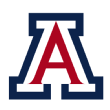
40. Tommy Lloyd, Arizona Wildcats — Lloyd played at Walla Walla Community College, where he was a prolific scorer who set a school single-season record with 52 points in a game and was an NWAAC All-Star. Lloyd told the Tucson Daily Star his play in Walla Walla generated “some low, low-level D-I interest” before he transferred to Division II Southern Colorado (now CSU Pueblo) for the 1995-96 season and finished his career at Division III Whitman College. Lloyd went on to play semi-pro basketball for two seasons in Australia and Germany before beginning his coaching career.

39. Robert Jones, Norfolk State Spartans — Jones was a quality player at the Division III level for SUNY New Paltz (1997-2001), winning three All-SUNYAC citations and earning honorable mention Division III All-American honors for the Hawks in 2000. Jones is New Paltz’s all-time leader in blocks (140) and remains top 10 in school annals in points (1,321) and rebounds (875).
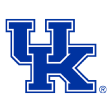
38. John Calipari, Kentucky Wildcats — Calipari started his career at UNC Wilmington, scoring 29 points during the 1979-80 season before transferring to Division II Clarion, closer to his native Western Pennsylvania. Calipari was a starter at point guard for the Golden Eagles, averaging 5.3 points and 5.3 assists during his senior season.

37. Dedrique Taylor, CSU Fullerton Titans — Taylor started his college basketball career at Kings River Community College (now Reedley College) before transferring to Division II Armstrong State, helping lead the Pirates to the Division II Sweet 16 in 1994-95. From there, Taylor transferred to then-Division II UC Davis, leading the Aggies in scoring in 1996-97 and helping them reach the D-II tournament in his final college season.
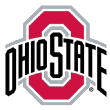
36. Chris Holtmann, Ohio State Buckeyes — After playing the first two years of his collegiate career at NAIA Brescia College in Owensboro, Kentucky, Holtmann would transfer and become an NAIA All-American guard at Taylor University in Upland, Indiana (where he was teammates with Akron’s John Groce, see above). Holtmann’s best year came in 1993-94, when he led Taylor to a 25-9 record, a No. 1 national ranking and a berth in the NAIA tournament. Holtmann finished his two-year career with the Trojans with 936 points and 229 assists and graduated as TU’s all-time leader with a 47.8 3-point percentage.

35. Kevin Willard, Seton Hall Pirates — Willard played for his father, Ralph, at Western Kentucky (1993-94) and then Pittsburgh (1995-97), serving mostly as a backup point guard. Willard, who scored 299 career points as a college player, passed up his senior season at Pitt to become an advance scout for Rick Pitino with the Boston Celtics.
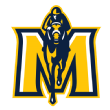
34. Matt McMahon, Murray State Racers— — McMahon was a four-year letterwinner as a guard at Appalachian State, averaging 5.8 points and collecting 135 3-pointers in his Mountaineers career (1996-2000). McMahon played on a 1999-2000 App State team that reached the NCAA tournament under coach Buzz Peterson.
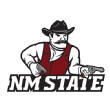
33. Chris Jans, New Mexico State Aggies — Jans was a three-year starter and prolific scorer at Division III Loras College in Dubuque, Iowa, between 1987 and 1991, averaging 28.3 points per game and making a school-record 133 3-pointers during his senior season. During Jans’ college career, the Duhawks broke 16 scoring records and two Division III records for 3-point shooting.

32. Eric Henderson, South Dakota State Jackrabbits — Henderson was a solid player at the Division II level for Wayne State College in Nebraska (1996-2000), where he played for current Creighton head coach Greg McDermott. Henderson was a member of four 20-win teams, two of which reached the NCAA Division II tournament. Henderson ranks among Wayne State’s all-time leaders in career rebounds (876), blocked shots (100) and steals (160).

31. Brad Underwood, Illinois Fighting Illini — Underwood started his collegiate career at then-Division I Hardin-Simmons (1982-83) in Abilene, Texas, before moving on to Independence (Kansas) Community College (1983-84) and then to Kansas State for two seasons (1984-86). Underwood was an occasional starter at guard under head coach Jack Hartman, scoring 105 points in two seasons in the Big Eight.

30. Andy Enfield, USC Trojans — Enfield was a Division III All-American at Johns Hopkins in Baltimore, where he still holds the school’s career scoring record (2,025 points) and also played in a pair of NCAA tournaments. Enfield was particularly legendary at the line — he graduated holding the NCAA’s all-divisions career free throw percentage record (92.5%, hitting 431 of 466 shots).

29. Scott Nagy, Wright State Raiders — Nagy was a star for some good teams at Division II Delta State in Cleveland, Mississippi (1984-88), and still holds the school record for assists in a career (549), season (234) and game (15). Nagy, who led the Statesmen to three NCAA berths during his career, was inducted into the Delta State Sports Hall of Fame in 2001.
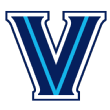
28. Jay Wright, Villanova Wildcats — Wright played three seasons at Bucknell (1980-83), emerging as the Bison’s leading scorer as a junior but serving as a role player for the rest of his career with the Bison.

27. Mike Krzyzewski, Duke Blue Devils — Coach K scored 426 points in three seasons as a point guard for Bob Knight at Army (1966-69), and was a starter and co-captain on the 1968-69 team that reached the NIT semifinals.

26. Ray Harper, Jacksonville State Gamecocks — After a decorated Kentucky high school career that saw him score 3,033 career points, Harper began his collegiate career at Texas, where he was the Southwest Conference Rookie of the Year in 1980-81. Harper played two years for the Longhorns — an on-court tussle with Arkansas guard, future NBA player and current Little Rock coach Darrell Walker is part of his legend in Austin — before transferring to Division II Kentucky Wesleyan, combining for more than 1,000 points at the two schools. Harper — who would become the two-time national championship-winning head coach at Kentucky Wesleyan after his playing career concluded– was named to the Panthers’ All-Century Team as a player in 2010.
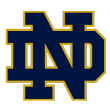
25. Mike Brey, Notre Dame Fighting Irish — Brey played three seasons at guard for Northwestern State (1977-80), racking up 311 assists along the way, but left when head coach Tynes Hildebrand got fired. The DC-area native transferred home to play his final season at George Washington (his mother, Betty, was the women’s swimming coach at GW), averaging 5.0 points and 4.8 rebounds in his senior season with the Colonials. Brey was inducted into the George Washington University Athletics Hall of Fame in 2014.

24. Todd Golden, San Francisco Dons — Golden played four years at guard for Saint Mary’s (2004-08), starting 82 games over his final three seasons with the Gaels and averaging 6.3 points and 2.9 assists per game over that stretch. Golden, who was a part of two NCAA tournament teams with Saint Mary’s (2005, 2008) — he scored eight points in a first-round loss to Miami in his lone NCAA appearance as a player — played professionally for two seasons with Maccabi Haifa of the Israeli Basketball Premier League before concluding his playing career and ultimately beginning his career in coaching.

23. Jared Grasso, Bryant Bulldogs — Grasso was one of the first standout players of Quinnipiac’s Division I era, a four-year starter at guard and two-year captain from 1998 to 2002 who graduated as a 1,000-point scorer and ranks in the school’s top five in assists and 3-pointers made. Grasso, who played in 103 career games and averaged 11 points and 3.9 assists per game for his career with the Bobcats, was named to the Quinnipiac Athletics Hall of Fame in 2014.

22. Fran McCaffery, Iowa Hawkeyes — McCaffery started his career in the ACC, averaging 5.3 points as a freshman at Wake Forest (1977-78) before transferring to Penn for his final three collegiate seasons. As a senior (1981-82), McCaffery dished out 105 assists for a Quakers team that reached the NCAA tournament.

21. Rob Lanier, Georgia State Panthers — Lanier played four years as a guard at St. Bonaventure (1986-90) — also the alma mater of his cousin and Naismith Hall of Famer Bob Lanier. GSU’s Lanier was a three-year starter who was named to the Atlantic 10 All-Freshman Team in 1986-87, and posted a double-digit scoring average in each of his final two seasons in Olean.
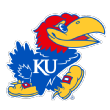
20. Bill Self, Kansas Jayhawks — Self played at Oklahoma State from 1981 to 1985, starting at point guard over his final two seasons in Stillwater. Self also played in the 1983 NCAA tournament as a sophomore at OSU, scoring eight points in a No. 5 vs. 12 upset loss to Princeton in the first round.
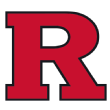
19. Steve Pikiell, Rutgers Scarlet Knights — A Bristol, Connecticut, native Pikiell stayed home to play for newly hired coach Jim Calhoun at UConn in 1986, eventually playing on a pair of NCAA tournament teams and recording 165 career assists as a part-time starter at point guard. Pikiell’s final career game as a Husky was a 1991 Sweet 16 loss to the Duke team that would later upset UNLV and win Coach K’s first national title.
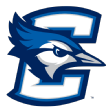
18. Greg McDermott, Creighton Bluejays — McDermott was a reliable center at Northern Iowa (1984-88), scoring 1,033 points (or about 2,000 fewer than his son, Creighton legend Doug McDermott) and being selected to the all-Mid-Continent Conference team as a junior. McDermott briefly played professional basketball in Switzerland following his graduation.

17. Drew Valentine, Loyola Chicago Ramblers — Valentine (age 30) played recently enough — for Oakland from 2009 to ’13 — that he is the only coach in this tournament with an active ESPN player page. The forward played in a pair of NCAA tournaments with the Golden Grizzlies (2009, 2010), was a 1,000-point scorer and graduated in the school’s top 10 in games played and offensive and defensive rebounding. Valentine’s younger brother, Denzel, was a first-round pick in the 2016 NBA draft out of Michigan State and has played with the Bulls, Cavaliers and Jazz.

16. Danny Sprinkle, Montana State Bobcats — Sprinkle was a Montana State playing legend before he became a coaching legend in Bozeman, playing four seasons with the Bobcats (1996-2000), including a starting role on MSU’s most recent NCAA tournament team in 1995-96. Sprinkle, the Big Sky freshman of the year, was an all-Big Sky Tournament pick for his 30-point performance in the ’96 Big Sky championship win over Weber State. Sprinkle would earn three All-Big Sky citations, including a first-team selection in 1997, and graduated as the MSU career and season 3-point leader. He remains in the school’s top 10 with 1,497 career points and was a 2006 inductee into the Montana State Athletics Hall of Fame.

15. Johnny Jones, Texas Southern Tigers — Jones played point guard for four seasons at LSU under Dale Brown (1980-84), averaging 4.4 points and 2.2 assists per game over a 121-game career and playing in a pair of NCAA tournaments as a Tiger. Jones is one of three coaches in this tournament with Final Four playing experience — he played nine minutes in LSU’s loss to eventual champion Indiana in the 1981 Final Four in Philadelphia.
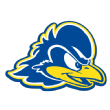
14. Martin Ingelsby, Delaware Blue Hens — Ingelsby played four years of point guard for Notre Dame (1997-2001), where he was guided by three different head coaches — John MacLeod (1997-99), Matt Doherty (1999-2000) and Mike Brey (2000-01). Ingelsby’s best season in South Bend was his senior year, when he averaged 8.2 points and 6.4 assists in leading Notre Dame to a share of the Big East title and its first NCAA tournament win in 12 years. A Philadelphia Catholic League legend at Archbishop Carroll and the son of former Villanova, NBA and ABA player Tom Ingelsby, UD’s Ingelsby led Notre Dame in assists during three of his four seasons.

13. Chris Mooney, Richmond Spiders — Mooney played four seasons under Pete Carril at Princeton (1990-94), scoring over 1,000 points as a forward during his collegiate career and playing on a pair of NCAA tournament teams. The Philadelphia native and graduate of Archbishop Ryan High School (also the alma mater of Iowa State star Izaiah Brockington) was a two-time All-Ivy League choice during his collegiate career.

12. Bob McKillop, Davidson Wildcats — McKillop began his collegiate career at East Carolina in 1967-68 before transferring home to his native Long Island to play his final two years of college basketball at Hofstra. McKillop averaged 10.5 points and 3.3 assists in his two-year career with the then-Flying Dutchmen. He subsequently signed with the Philadelphia 76ers, but was cut before playing a game — sparing him the fate of playing on the 1972-73 Sixers team that finished with a historically wretched 9-73 record. McKillop began his coaching career after being released, becoming a successful high school coach on Long Island before returning to the Tar Heel State to become an assistant, and later the head coach at Davidson.

11. Matt Langel, Colgate Raiders — Langel was a very good player on some formidable teams at Penn (1996-2000), starting on a pair of NCAA tournament squads under Fran Dunphy and earning All-Ivy first-team honors as a senior. Langel went to rookie camp with the NBA’s Seattle SuperSonics and was on the Philadelphia 76ers’ pre-summer league squad, also playing for a range of teams in Europe before beginning his coaching career.

10. Matt Painter, Purdue Boilermakers — Painter was a four-year letterman at Purdue (1989-93), playing on three NCAA tournament teams and becoming a full-time starter as a senior. Painter was an honorable mention All-Big Ten choice in 1992-93, when he averaged 8.6 points and 4.5 assists per game.

9. Dan Hurley, UConn Huskies — Though brother Bobby received more of the limelight for his exploits at Duke, the younger Hurley was a collegiate point guard of some renown as well. Hurley played in 121 games over five seasons at Seton Hall (1991-96), appearing in a pair of NCAA tournaments and later developing into a double-digit scorer over his final two seasons at the school. Hurley’s 437 assists rank among the top 10 in Seton Hall history.
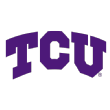
8. Jamie Dixon, TCU Horned Frogs — Dixon played at TCU from 1983 to ’87, with his best season coming as a senior, when he earned All-Southwest Conference honors, led the league in assists and paced the Horned Frogs to what remains their most recent NCAA tournament win. Dixon scored 11 points and had four assists in that first-round victory over Marshall. Dixon was selected in the seventh round of the 1987 NBA draft by the Washington Bullets and played professionally in the CBA and overseas.

7. Jim Larranaga, Miami Hurricanes — Larranaga was a star at Providence from 1968 to ’71, graduating as the school’s all-time fifth-leading scorer (1,258 points) and leading the team in scoring in two of his three years with the Friars. He was inducted into the Providence Hall of Fame in 1991. Larranaga was selected in the sixth round of the 1971 NBA draft by the Detroit Pistons but left the team’s rookie camp when a position on Terry Holland’s staff opened at Davidson.
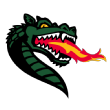
6. Andy Kennedy, UAB Blazers — Kennedy started his collegiate career playing for Jim Valvano at NC State in 1986-87 — his freshman season is chronicled in the notorious book Personal Fouls — before he transferred to UAB and became one of the Blazers’ all-time greats. Kennedy scored 1,787 points — second most in school history — in just three seasons (1988-91) and also holds the school records for career 3-pointers made (318) and attempted (728), 3-point field goal percentage (.437), free throw percentage (.872) and highest single-season scoring average (21.8 PPG in 1990-91). Kennedy was a two-time All-Sun Belt pick before going on to play professionally in Greece, the Netherlands, Spain and Puerto Rico.

5. Shaheen Holloway, Saint Peter’s Peacocks — Holloway was an outstanding and decorated guard at Seton Hall (1996-2000) during what was a golden era for the Big East Conference. A four-year starter and three-time All-Big East choice at point guard, Holloway scored 1,588 points (13.9 per game for his career), dished out a school record 681 assists (5.9) and recorded 231 steals (2.0) under coaches George Blaney and Tommy Amaker.
As a senior, Holloway was part of a Pirates team that reached the Sweet 16, upsetting second-seeded Temple to get there, but Holloway injured his ankle in that game and watched as Seton Hall fell to Desmond Mason, Doug Gottlieb and Oklahoma State in a regional semifinal. Holloway played professionally in England, Germany and Turkey, as well as in the USBL and ABA and was invited to preseason camps with the NBA’s Knicks, Nets and Warriors.
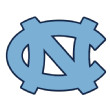
4. Hubert Davis, North Carolina Tar Heels — Davis played for six teams during a 12-season NBA career (1992-2004), with his most memorable time spent as a member of the New York Knicks from 1992 to ’96. Davis played on the 1993-94 Knicks team that lost to the Houston Rockets in seven games in the 1994 NBA Finals. Though he’s mainly remembered as a sharpshooter at the pro level — Davis shot 44.1% on 728 made 3s over his NBA career — he was also an outstanding all-around college player as a member of the Tar Heels from 1988 to ’92. Davis scored 1,615 career points in 137 games as a Tar Heel, playing in the 1991 Final Four under Dean Smith and winning the the 1989 and 1991 ACC tournaments. Davis averaged 21.4 points per game as a senior in 1991-92, before the Knicks selected him with the 20th overall pick in the 1992 draft.

3. Mike Woodson, Indiana Hoosiers — Woodson was a fantastic college player as a member of the Hoosiers from 1976 to 1980, and currently ranks No. 5 all-time in IU annals with 2,061 points (19.8 points per game) over his career. The Big Ten Player of the Year as a senior, Woodson was the No. 12 overall pick in the 1980 NBA draft by the New York Knicks and ultimately averaged 14 points per game while playing for six franchises in an 11-year NBA career. Woodson’s season best was an 18.2 PPG scoring average with the Kansas City Kings in 1982-83. In addition to his collegiate and professional exploits, Woodson won a gold medal representing Team USA in the 1979 Pan American Games.
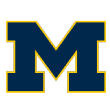
2. Juwan Howard, Michigan Wolverines — Howard was a decorated part of Michigan’s fabled “Fab 5” teams of the ’90s, joining Chris Webber and Jalen Rose on a group that reached the national championship game in 1992 and 1993. Following Webber’s departure, Howard was an All-American for the 1993-94 Wolverines, averaging 20.8 points and 8.9 rebounds for a group that lost to eventual champion Arkansas in the Elite Eight. Howard was subsequently selected with the No. 5 overall pick in the 1994 NBA draft by the Washington Bullets and played in 1,208 career NBA games, which ranks in the league’s top 50 all time. Howard’s pro achievements include his selection to the 1996 All-Star Game and an NBA title won with the 2011-12 Miami Heat.
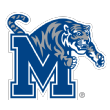
1. Penny Hardaway, Memphis Tigers — A four-time NBA All-Star with the Orlando Magic, Hardaway also played for the Phoenix Suns, New York Knicks and Miami Heat over a 14-year NBA career (1993-2006, 2007-08) that saw him emerge as one of the game’s most recognizable players. Hardaway reached the NBA playoffs eight times in his career — a 1995 NBA Finals loss to the Houston Rockets was the closest he got to a title — and averaged 20.4 points and 6.2 assists per game in the postseason.
Hardaway’s basketball achievements went beyond the NBA — he was a consensus All-American in college at Memphis in 1993 and won gold with USA Basketball at the 1996 Olympics in Atlanta. Nike’s “Lil’ Penny” ad campaign also helped launch Hardaway to superstardom off the court. Though injury problems that began with a serious knee injury in 1997-98 likely prevented Hardaway from reaching his full potential as a player, he is remembered as one of the important players of his generation.
